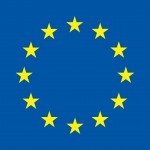Objectives:
To adequately account for SES differences in lifetime exposure assessments
Description of work and role of partners:
Individual health and well-being are influenced by many factors including past and present behaviour, health care provision and ‘wider determinants’ including social, cultural and environmental factors. This WP will explore the social and cultural factors, and evaluate how socio-economic status (SES) should be taken into account when modelling external exposure. It can be argued that socio-economic factors are as important as the physical environment in determining health impacts on human populations, since a disproportionate share of the burden of environmental exposure falls on vulnerable groups of society (defined as low SES, ethnic minorities, the elderly and young) due partly to issues of environmental (in)justice.
Task 10.1 Establishing the state-of-the art of the relationship between Socio-Economic Status and Environmental Exposure (UNIVBRIS, USTUTT, CSIC)
It is important to investigate the evidence of relationships between socio-economic status and exposure to pollutants, i.e. to investigate how time-activity patterns, indoor pollution and concentrations in microenvironments change with changing SES. The literature will be closely examined, and results passed to Task 3.3.2 to implement.
Task 10.2 Application of the SES-informed exposure and risk model to population data (UNIVBRIS, AUTH, IOM, USTUTT, VTT, TNO, CSIC, UOWM, CNR)
Informed theoretically by Task 10.1, and using existing national population censuses and surveys, we will use geospatial analysis methods to distribute our exposure estimates (from WP9) across all sectors of society at a local neighbourhood scale, for all of Europe. Gaps in censuses and the surveys will be modelled using Agent-based modelling (ABM) from WP9 to inform the division of exposure across different SES groups. Working with the prospective singletons and twin’s cohorts in WP17 (EXHES), we have the additional opportunity to directly survey the singletons and twins cohort’s parents for socio-economic status at the household level, acting as a check on the ecological level estimates.


